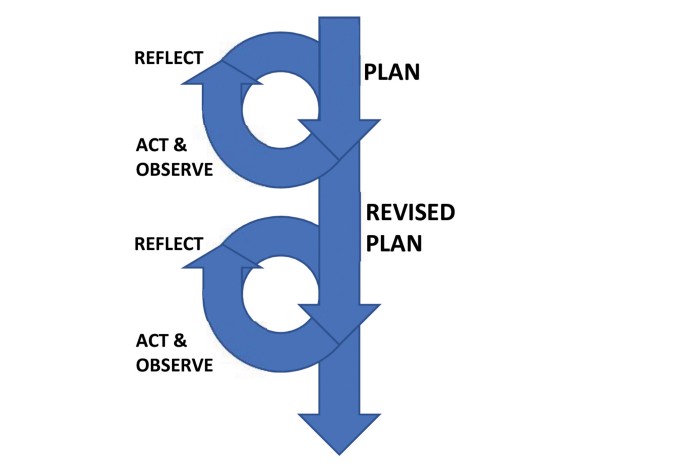This article was first published at Medium
While Design Science Research Methodology, Action Research, Design Research seem similar in their terminology, there are distinct differences that help differentiate these different approaches that intersect research and design.
In very simplistic terms, the goals of scientific research are to examine a sample demographic for the occurrence/non-occurrence of a phenomenon with the interest of generating new knowledge; knowledge which from scientific purposes has reliability and validity. However, the purpose of design or the design process is to use research (new knowledge from the investigation of a demographic) to create something: an object, artifact, device, system, equipment, service or environment that facilitates or solves a problem within a human-centric paradigm. The process of design lends itself to the “making” of such tangible objects/services which affords the betterment of the human lifestyle.
Design Science Research Methodology
Design Science Research (DSR) is a scientific methodology of problem-solving that was developed specifically for the Information Systems (IS) domain. Many researchers have used the iterative Design Science Research methodology (DSR) to develop information technology (IT) artifacts. DSR involves the creation of new knowledge through the design of new or innovative artifacts, analysis of the use and performance of these artifacts to improve information systems (Vaishnavi & Kuechler, 2007).
Empirical research alone allows us to evaluate design artifacts quantitatively, but it does not provide the iterative framework that leads to the design of an artifact in the same way that DSR does. DSR (Vaishnavi & Kuechler, 2007) is, therefore, a well-suited research approach because it embraces the artifact creation as well as its iteration. For example, developing gamified physical activity technology or healthcare interventions for older adults’ presents the opportunity to create gamified technological artifacts to help older adults’ in overcoming their sedentary lifestyles.
DSR investigates designing novel artifacts and analyzing these artifacts and their use through the lenses of design, analysis, reflection, and abstraction (Vaishnavi & Kuechler, 2007). The DSR methodology also involves the study of artificial phenomena designed to extend human and organizational capabilities (Hevner, March, Park, & Ram, 2004).
The iterative stages of DSR are as follows: problem awareness, suggestion, development evaluation, and conclusion (Vaishnavi & Kuechler, 2007). Additionally, the seven guidelines for DSR methodology are identified as follows: (1) design as an artifact, (2) problem relevance, (3) design evaluation, (4) research contributions, (5) research rigour, (6) design as a search process, and (7) communication of research (Hevner et al., 2004). Creating, modifying and evaluating artifacts (Hevner et al., 2004) (an important part in iterative DSR) are ways in which this thesis advances our knowledge about designing technology for older adults using DSR (Table 1).
| DSR Guidelines | Description | |
| 1 | Design as an Artifact | Design science research must produce a viable artifact in the form of a construct, a model, a method, or an instantiation |
| 2 | Problem relevance | Develop technology-based solutions to solve important and relevant business problems |
| 3 | Design evaluation | The utility, quality, and efficacy of a design artifact must be rigorously demonstrated via well-executed evaluation methods. |
| 4 | Research contributions | Effective design science research must provide clear and verifiable contributions in the areas of the design artifact, design foundations, and/or design methodologies. |
| 5 | Research rigour | Relies on the application of rigorous methods in both the construction and evaluation of the design artifact. |
| 6 | Design as a search process | The search for an effective artifact requires utilizing available means to reach desired ends while satisfying laws in the problem environment. |
| 7 | Communication of research | Design science research must be presented effectively to both technology-oriented and management-oriented audiences. |
Table 1: DSR Guidelines (adapted from (Hevner et al., 2004) )
Action Research
Action Research (AR), a term coined by Kurt Lewin, a professor at MIT (1944), is a methodology that establishes an iterative process of simultaneous occurrence of “taking action” and doing “research”. This methodology assumes the involvement of a client. Therefore, this process is context-dependent and is not limited to the design and development of technology artifacts but can be used in social innovation, environmental policy change through participatory collaboration between researchers and clients systematically.
While the DSR methodology may result in artifact design and development without the existence of a client, the AR methodology is generally iterative within a client-researcher participatory investigation that may not result in a technology artifact (Iivari & Venable, 2009). The client in AR is often an existing large organization, corporation or institution desirous of improvement of their strategies, work environment, current practices and knowledge base within the system, to mention a few initiatives.
The iterative and participatory AR method (Kemmis & McTaggart, 2005) can be used to resolve “wicked problems”: challenges involving complex and contradictory issues, multiple agencies and opinions, interrelated domains and multi-stakeholder environments.

Figure 1: Kemmis and McTaggart’s action research spiral
Design Research
Design Research as a term originated in 1960 from the broader work done in the domain of Design Methods. The study of and research into the process of design in any discipline such as industrial design, interaction design, graphic design, web design and human factors applications to mention a few, is known as “design research”.
Within the industrial design and interaction design disciplines, design research is the activity that investigates a sample demographic for whom a design solution is envisioned. That being said, design research is an integral part of human-centred design. Design research helps to humanize the problem being investigated through in-depth understanding and observations of the end-users. This process helps the designer to empathize with the challenges of the end-user.
The IDEO design process is rationalized into a five-step method as follows:

Figure 2: Five-step design process (adapted from IDEO)
In this process, design research helps to connect the end-users throughout all phases of the iterative design process.
Within the five-stage approach of design thinking, as posited by the Stanford D-School, developing an understanding of the human context of a problem definition defines the empathy aspect of the process.

Figure 3: Design Thinking stages (adapted from D-School)
A human-centric design process understands the needs, wants and desires of a consumer or specific demographic to design engaging experiences when they interact with a product or service. Design Research helps to facilitate this understanding and engenders a nuanced perspective of the end-users while solving a design problem. Design Research begins with empathy and culminates in connecting the design solution with the needs and wants of the end-user.
Conclusion
While DSR, AR and design research have an iterative process, the current application of these methods is aligned towards the development of a technology artifact, solving wicked problems and product/application development respectively.
DSR presents a scientific methodology to the design and development of products and services with the IS domain. However, this does not mean that this methodology cannot be applied to other domains. A scientific methodology ensures the validity and reliability of a process, procedure or protocol from a replicability dimension.
In the same vein, the AR methodology expounds on the benefits of participatory collaboration between multiple stakeholders within the purview of a challenging problem definition.
Empathy humanizes design research by helping designers to develop a nuanced understanding of the end-users. Therefore, understanding human-interaction touchpoints are critical during the problem identification phase of the industrial design/interaction design methodology and are facilitated through design research.
References:
Hevner, A. R., March, S. T., Park, J., & Ram, S. (2004). Design Science in Information Systems Research. MIS Quarterly, 28(1), 75–105.
Iivari, J., & Venable, J. (2009). Action Research and Design Science Research — Seemingly similar but decisively dissimilar. Action Research, (June 2014), 1–13.
Kemmis, S., & McTaggart, R. (2005). Participatory Action Research: Communicative Action and the Public Sphere. In N. K. Denzin & Y. S. Lincoln (Eds.), The Sage handbook of qualitative research (pp. 559–603). Thousand Oaks, CA, Sage Publications Ltd.
Vaishnavi, V., & Kuechler, B. (2007). Design Science Research in Information Systems. In Design Science Research Methods and Patterns: Innovating Information and Communication Technology (1st ed., pp. 12–96). Boston, MA: Auerbach Publications.
